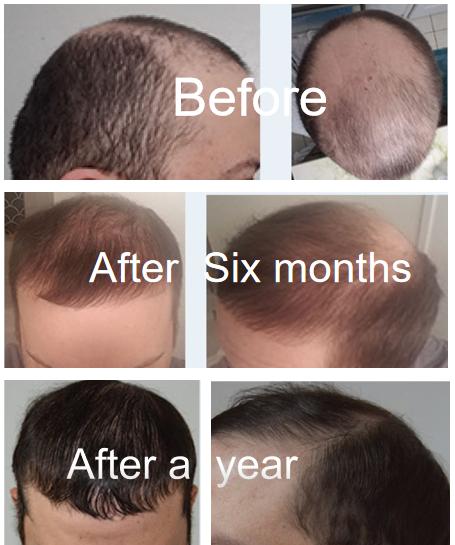Categories
- Blog (65)
A large number of studies show that low serum vitamin D levels associate with androgenic alopecia, alopecia interlude, alopecia areata, scarring hair, and trichotillomania. This is because vitamin D involve in various signaling pathways for hair follicle growth and differentiation. Therefore, supplementing with vitamin D3 can help prevent hair loss and promote hair regeneration.
Each hair follicle is a miniature endocrine organ that contains receptors and even synthesizes many different hormones. DHT is one of many hormones that can affect hair growth or cause hair loss. Vitamin D is a key element in the body. It is not only related to calcium and phosphorus metabolism in bone health, but also involved in immune, neurological, cardiovascular and metabolic functions.
In mice with congenital hair loss due to a congenital deficiency of vitamin D receptors, found new hair follicles in skin biopsies of the mice after stimulation with vitamin D3 and its analogues. A genetic mutation that causes an abnormal vitamin D receptor can lead to hair loss in babies. Therefore, vitamin D receptors are an important part of initiating the initial stages of hair growth and hair follicle growth.
In one treatment case of a 41-year-old man with severe vitamin D deficiency, serum vitamin D was 12ng/ml. For six weeks of treatment, take 50,00IU of vitamin D3 weekly, followed by 10,000 IU weekly for eight months. After 6 months, the frontal hair regenerated significantly, at which time the serum vitamin D level had normalized to 50.6ng/ml. One year later, the frontal hair remained fine.

Disruption of normal hair growth observe in patients with vitamin D receptor mutations, demonstrating the critical role of vitamin D receptors in normal hair growth. Animal studies have shown that the role of vitamin D receptors in the hair cycle is to inhibit the expression of certain genes that contribute to hair loss.
Vitamin D receptors play an important role in hair follicles, inducing the development of hair and early hair growth and enabling stem cells raised in hair follicles to replicate. The ligand for the vitamin D receptor is vitamin D, and studies have shown that increased serum levels of vitamin D significantly increase gene expression of the vitamin D receptor.
The body’s largest natural source of vitamin D is vitamin D3, which is produced in the skin through the interaction of the sun’s ultraviolet rays with provitaminol and cholesterol. Therefore, you can get more vitamin D3 by spending enough time in the sun.
If you can’t get enough sun every day, you should pay attention to your diet. However, very few foods contain enough vitamin D to meet the daily requirement. Therefore, vitamin D deficiency is a relatively common phenomenon. Modern people begin to pay more and more attention to vitamin D supplementation.
Vitamin D is not only beneficial for hair growth, but also for bone health, immune enhancement and increased metabolism, but it is also important to avoid excessive vitamin D. It is a fat-soluble vitamin, and storing too much of it can lead to poisoning. Vitamin levels above 150ng/ml are considered excessive and may produce toxic symptoms in the body. Such as excessive absorption of calcium and phosphorus in the gastrointestinal tract, which can lead to hypercalcemia and related symptoms, including abdominal pain, vomiting, polyuria and dehydration.
Vitamin D3 usually take orally. When using it to treat hair loss, it can also use topically, and some users have shared how they use it and have shown that it is effective for AGA hair loss.